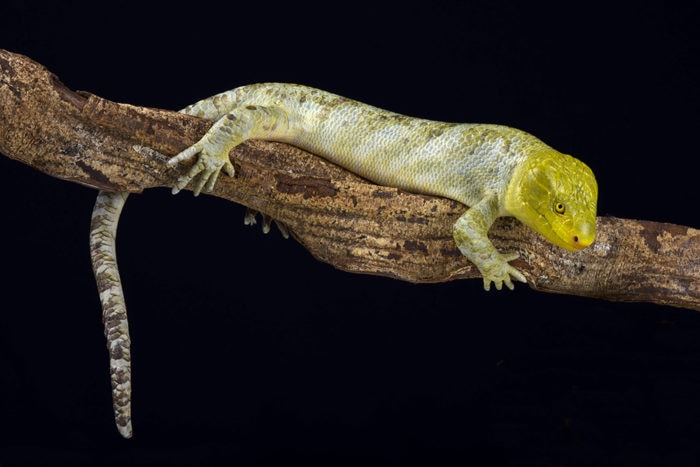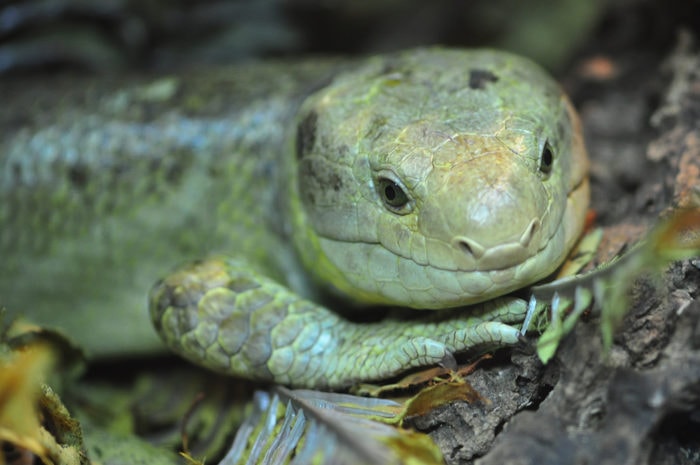The Solomon Islands skink is an absolute unit

Bec Crew
Bec Crew

FOR MOST AUSTRALIANS, the word “skink” immediately brings to mind a sweet, miniature lizard, that those of us with cats are often rescuing from a rather unfairly matched skirmish on the kitchen floor.
But nearby, on the Solomon Islands, skinks are neither sweet nor miniature. They are big, brawny reptiles that look more like dinosaurs than your regular garden skink.
In fact, at more than 70 cm long from nose to tail, these are the largest skinks on Earth.
Also known as monkey-tailed skinks, the Solomon Islands skink (Corucia zebrata) has a long, slender tail, which is fully prehensile, meaning it can use it like a fifth leg to grip onto branches as it climbs.
The species gets its name thanks to the zebra-like pattern that adorns its green scales, as you can see below:

(Image credit: reptiles4all/Shutterstock)
The Solomon Islands skink’s heft might be its most obvious trait, but it’s not the only thing that makes this large lizard special. The species is one of only a handful of lizards in the world known to maintain a unique social group called a circulus.
While most reptiles are fairly indifferent to each other, choosing to live on their own for most of their lives (excluding the mandatory reproduction part), some opt to stick together and protect each other – even if they’re not related.
When Solomon Island skinks are born, they’re already a whopping 30 cm long. (And I do mean born – these reptiles don’t lay eggs, they have live births). These big babies remain within their circulus for up to a year, protected not only by their parents, but by the whole clan.
And it gets cuter, because Solomon Islands skinks, just like Australia’s stump-tailed skinks (Tiliqua rugosa), are known to form long-term, monogamous mating pairs, which can last for a remarkable 20 years within a circulus.
Now I know I said there was nothing sweet about these giant reptiles, but I may need to rethink that, particularly when there’s this one, looking so neat and polite:

(Image credit: Yury Nevalenny/Shutterstock)
I’ll leave you with another very lovely Solomon Islands skink, demonstrating its love of all things beans:

